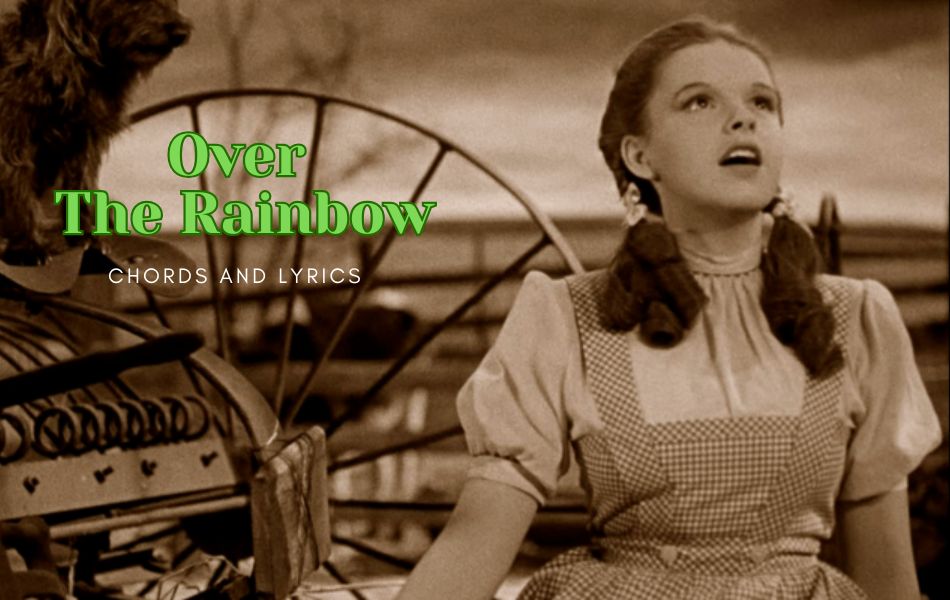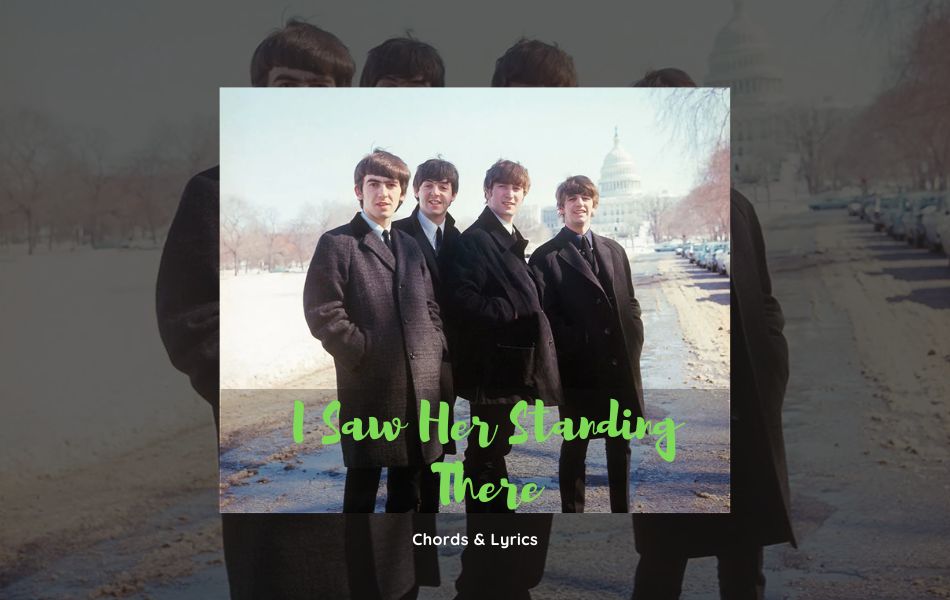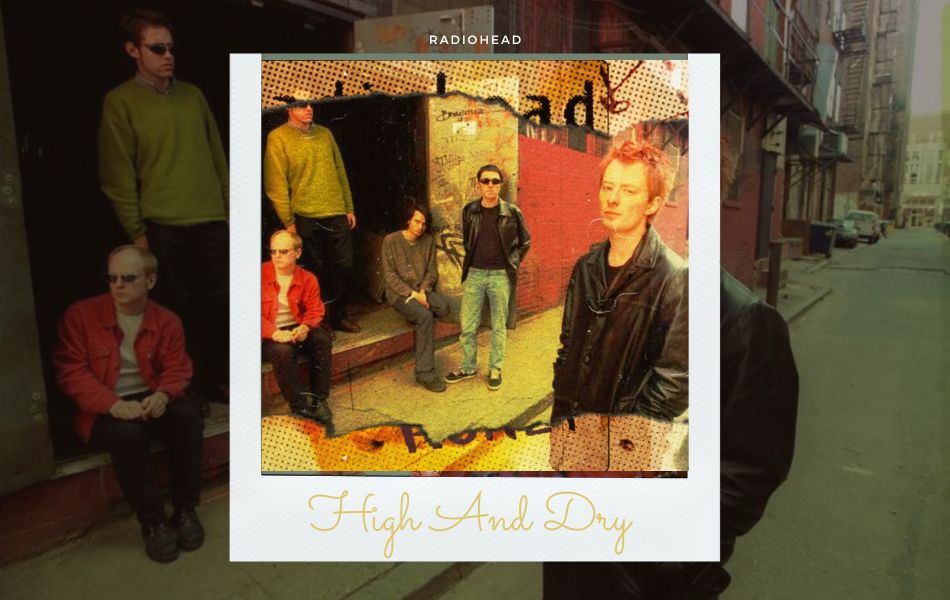Overview Of Ukulele Chords For Beginners
Track Info

Song:
Artist:
Writers:
Producers:
Album: Updating
Chords Info
Tuning
CapoNo Capo
Chords Used
If you're just beginning your journey with the ukulele, understanding chords is essential to unlocking the instrument's full potential. Ukulele chords form the building blocks of countless songs, offering a gateway to expressing your musical creativity. In this overview of ukulele chords for beginners, we'll delve into the fundamentals, exploring the basic chords you need to know to start playing your favorite tunes.
Which ukulele chord should beginners learn?
On the ukulele, there are hundreds, even thousands of different chords you can learn and play. However, in reality, not all chords are commonly used in music. Some of the most basic and popular chords you should start with are about 20-30 chords, including basic chords like C, G, F, Am, Dm, and Em, along with some variations such as C7, G7, and Fmaj7.
Once you're familiar with these basic chords and want to expand your playing ability, you can start learning more complex chords like D, A, E, and chord inversions. Additionally, you can also explore extended chords like Cmaj7, Gsus4, and secondary chords like Am7, D7, and E7.
Most importantly, pick a few basic chords to start with and gradually expand as you progress. Regular practice and patience will help you become a skilled ukulele player! You can take a closer look at basic ukulele chords for beginners here.
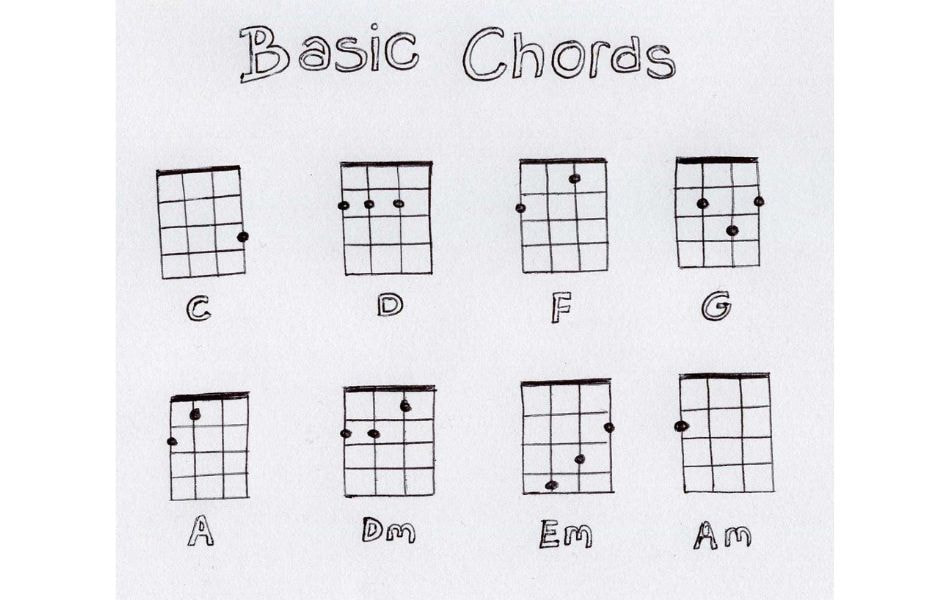
Explanation of chord diagrams
To master the ukulele, understanding ukulele chord charts is key. These charts visually represent the strings on your ukulele:
G = 4th string
C = 3rd string (lowest tone)
E = 2nd string
A = 1st string (highest tone)
Unlike the guitar, the lowest-toned string on a ukulele is the third string. You'll see numbers and symbols on the charts indicating finger placement:
O: Play the string openly
X: Don't play or mute the string
1 = Index finger
2 = Middle finger
3 = Ring finger
4 = Pinky finger
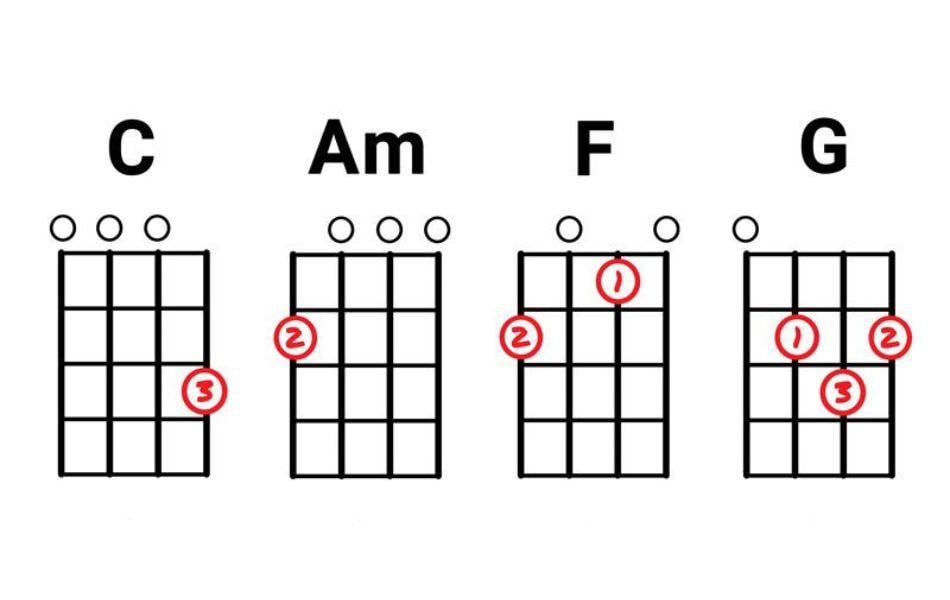
Types of ukulele chord
Major ukulele chord
Strumming a major chord on the ukulele reveals its bright, zingy sound, instantly captivating listeners. Just like on a guitar, major chords on a ukulele follow a similar formula.
They consist of the root (or first), third, and fifth notes of a major scale. This simple yet powerful combination forms the foundation of countless melodies, making major chords essential for any ukulele player's repertoire.
Minor ukulele chord
While major chords emanate a cheerful tone, ukulele minor chords tend to evoke a darker or slightly melancholic mood. Similarly, when played on the ukulele, minor chords follow the same formula as they do on the guitar.
To form a minor chord, one utilizes the root (or first) note, the flattened third, and the fifth note of any major scale. The distinguishing characteristic of a minor chord lies in its flattened third note, lowered by half a step, contributing to its somber and introspective sound.
Ukulele power chord
A ukulele power chord is a chord consisting of only two notes: the root (or first) and the fifth notes of a major scale. Unlike traditional chords, power chords omit the third note, which determines whether a chord is major or minor. These chords are often played in open position or with just one finger, making them easier to transition between chords.
While they lack the distinct major or minor quality of traditional chords, ukulele power chords are highly versatile and can be used to create different moods or atmospheres within a song. They are commonly used in various musical genres, adding depth and richness to ukulele arrangements.
As you continue your ukulele journey, mastering these basic ukulele chords will provide you with a solid foundation to build upon. Remember, learning to play the ukulele is a process, and patience and persistence are key. With each chord you learn and each song you play, you'll discover new possibilities and unlock your musical potential.






